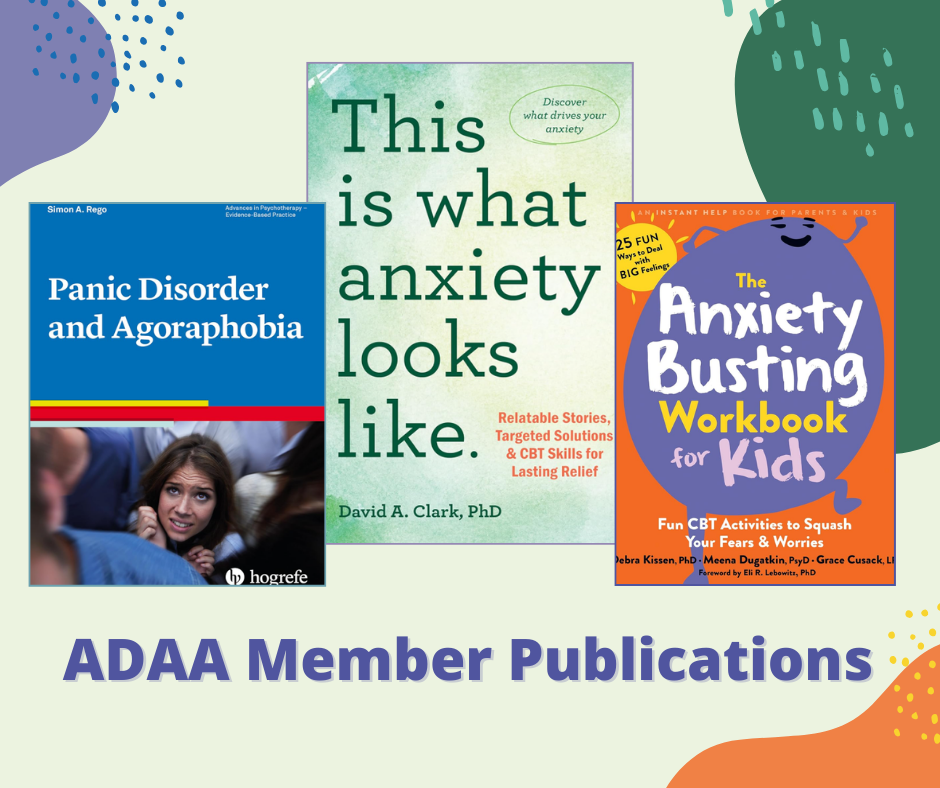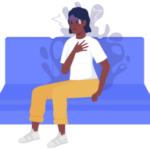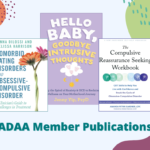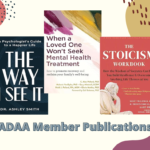Comprehensive Guide to Understanding and Treating Panic Disorder and Agoraphobia
Panic disorder and agoraphobia are two interrelated yet distinct mental health conditions that can severely impact a person’s quality of life. These disorders can become overwhelming and debilitating, especially when treatment is not sought. Fortunately, both conditions are highly treatable, and many individuals experience significant improvements through effective therapies. Cognitive Behavioral Therapy (CBT) is often the cornerstone of treatment, showing high efficacy when delivered by skilled and trained mental health professionals.
In his latest book, Simon Rego, PsyD, ABPP, A-CBT, draws from his extensive clinical experience and evidence-based practices to provide readers with useful guidance, expert insights, and adaptable strategies. His approach emphasizes tailoring treatment to meet the unique needs of each patient, ensuring that interventions resonate on a personal level.
Panic Disorder and Agoraphobia (Vol 55) – Advances in Psychotherapy Evidence-Based Practice serves as a succinct and contemporary resource for understanding these disorders. This book addresses critical aspects such as diagnosis, assessment, and treatment using the latest CBT interventions. It is described as an essential resource for clinical psychologists, mental health practitioners, and students alike, featuring clear descriptions of each disorder, a review of relevant scientific theories, and a structured guide to aid in diagnostic and treatment decisions.
Dr. Rego characterizes this book as a unique blend of traditional CBT techniques, rooted in emotional processing models, and innovative strategies derived from the inhibitory learning model of extinction. This includes actively cultivating new associations to disrupt the expectations individuals have about the outcomes of panic symptoms and panic attacks, paving the way for more effective management strategies.
While numerous resources on evidence-based psychotherapy exist, Dr. Rego highlights the exceptional consistency across this series of books. Each volume is designed to offer a coherent structure, allowing readers to engage with the content intuitively and anticipate the flow of information from one book to another.
“These publications are crafted for readability, aligning with contemporary theoretical frameworks,” Dr. Rego explains. “They provide practical strategies and illustrative case examples, making them ideal for busy clinicians who seek to absorb information efficiently.”
With a systematic approach that includes in-depth case studies, a structured 12-session treatment plan, and downloadable worksheets, Dr. Rego’s manual empowers practitioners to approach their patients’ fears and anxieties with confidence and competence, facilitating the journey towards a more fulfilling life.
Recognizing the need for updates on recent advancements in the treatment of panic disorder and agoraphobia, Dr. Rego felt compelled to share this timely resource. “The field has lacked an up-to-date, practitioner-oriented book on panic disorder for a considerable period,” he shared with ADAA. “I hope this publication serves as a valuable refresher and introduces novel ideas for practitioners.”
Pre-order Panic Disorder and Agoraphobia (55) – Advances in Psychotherapy Evidence-Based Practice here. Release date March 30, 2025.
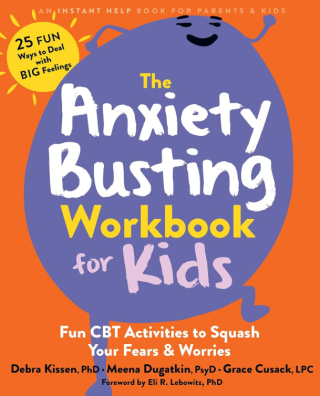
Engaging Workbook for Kids: Transforming Anxiety into Adventure and Fun!
While many workbooks claim to be kid-friendly, few truly capture the essence of fun. However, ADAA member Debra Kissen, PhD, MHSA, along with co-authors Meena Dugatkin, PsyD, and Grace Cusack, LPC, have created a new workbook that is both enjoyable and educational. With a foreword by ADAA member Eli R. Lebowitz, PhD, this workbook stands out for its engaging approach.
Rooted in evidence-based psychological principles, The Anxiety Busting Workbook for Kids: Fun CBT Activities to Squash Your Fears and Worries empowers children to transform anxious thoughts into curiosity, determination, and courage. This workbook offers a playful and interactive experience, making the subject of anxiety feel much less daunting and overwhelming for children.
Dr. Kissen explains that the workbook is designed to equip both children and their parents with a toolkit of skills to confront fears in a fun, approachable, and empowering manner. “We aimed to demystify anxiety,” Dr. Kissen shared with ADAA, “allowing kids to comprehend their internal experiences while providing them with actionable strategies to manage anxiety and feel safe in previously frightening situations.”
Filled with 25 creative games and engaging activities, every chapter of the workbook opens with a child-friendly introduction, followed by fun challenges like a Fear-Busting Scavenger Hunt or a visit to the I-Scream Shop. Each chapter concludes with rewarding children at Celebration Station, making the experience feel like an exciting adventure complete with prizes!
Through imaginative exercises, relatable metaphors, and vibrant illustrations, Dr. Kissen and her team have crafted an experience that encourages kids to eagerly engage with the activities, framing them as exciting opportunities for growth and exploration.
Dr. Kissen emphasizes that anxiety should not be feared or stigmatized. “Children possess the ability to train their anxiety to serve them rather than hinder them,” she states. “Anxiety acts as a protective mechanism, even if it can be overly cautious at times. Through small, brave steps, kids can teach their anxiety ‘guard dog’ to be less reactive.”
The Anxiety Busting Workbook for Kids is designed for children aged 6 to 12, along with their parents, teachers, school counselors, and anyone involved in supporting a child with anxiety. Dr. Kissen hopes this workbook will empower children, with their parents’ guidance, to confront anxiety with a flexible and playful mindset rather than avoidance, resistance, or feeling trapped. With their new CBT toolbox, children can learn to perceive anxiety as an uncomfortable yet manageable aspect of life.
Order The Anxiety Busting Workbook for Kids: Fun CBT Activities to Squash Your Fears and Worries here.
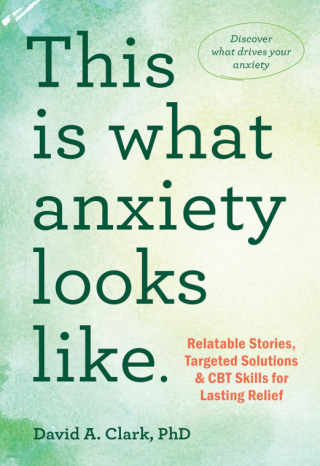
Understanding Anxiety: Insights and Solutions Through Compelling Stories and CBT Techniques
Renowned psychologist and anxiety specialist David A. Clark, PhD, was prompted to reflect on the necessity of adding another book to the vast collection on anxiety when he discovered over 50,000 entries on Amazon for the topic. Ultimately, he decided to share his insights through This is What Anxiety Looks Like: Relatable Stories, Targeted Solutions, and CBT Skills for Lasting Relief.
This new book offers a fresh perspective on anxiety, presenting it in a manner that sets it apart from many existing resources. Dr. Clark’s work equips readers with practical, actionable strategies to understand and confront their own (or a loved one’s) anxiety with compassion, determination, and skill.
Though it is not structured as a workbook, Dr. Clark’s publication is highly functional and accessible. His goal is to provide a valuable resource for individuals who may feel overwhelmed by traditional workbook formats.
“I took into consideration the many individuals I have worked with over the years who find workbooks discouraging,” Dr. Clark explained to ADAA. “So, I designed a book for those who seek something different. This is What Anxiety Looks Like is not a workbook, yet each chapter contains instructions on employing practical strategies to address specific anxiety-related challenges.”
Rather than focusing on worksheets, Dr. Clark enriches the reader’s experience through engaging, relatable narratives. He includes “clinical composites” that encapsulate common struggles faced by individuals dealing with anxiety, communicating essential concepts and providing actionable tips, strategies, and solutions grounded in cognitive behavioral therapy (CBT). For each narrative, he outlines several treatment interventions.
So, what does anxiety truly look like?
Anxiety can manifest in various forms, including catastrophic thinking, persistent rumination, incessant reassurance-seeking, and chronic avoidance, among others. Dr. Clark’s book identifies more than a dozen recognized categories of anxiety, emphasizing that anxiety is a complex emotion that doesn’t require a formal diagnosis to be valid. However, when anxiety begins to interfere with daily functioning or becomes debilitating, this book serves as a helpful resource.
“Anxiety is a multifaceted emotion akin to fear or sadness, yet it affects different aspects of our lives,” Dr. Clark articulates. “There exists a distinction between healthy anxiety and problematic anxiety. In this book, I approach anxiety as an emotion, dissecting its core components and various characteristics.”
This is What Anxiety Looks Like can help you:
- Identify the troubling thoughts and behaviors that exacerbate your anxiety
- Utilize targeted skills to alleviate your symptoms
- Break free from cycles of anxiety, worry, and catastrophic thinking
- Achieve lasting tranquility and peace of mind
Order This is What Anxiety Looks Like: Relatable Stories, Targeted Solutions, and CBT Skills for Lasting Relief here. Dr. Clark also maintains a blog called The Runaway Mind, where he shares further insights.
Explore ADAA’s bookstore featuring self-help books authored by our members.
Discover all of the ADAA Member Book Blogs here.
!function(f,b,e,v,n,t,s)if(f.fbq)return;n=f.fbq=function()n.callMethod?n.callMethod.apply(n,arguments):n.queue.push(arguments);if(!f._fbq)f._fbq=n;n.push=n;n.loaded=!0;n.version=’2.0′;n.queue=[];t=b.createElement(e);t.async=!0;t.src=v;s=b.getElementsByTagName(e)[0];s.parentNode.insertBefore(t,s)(window,document,’script’,’//connect.facebook.net/en_US/fbevents.js’);
fbq(‘init’, ‘1547202075599663’);
fbq(‘track’, “PageView”);
